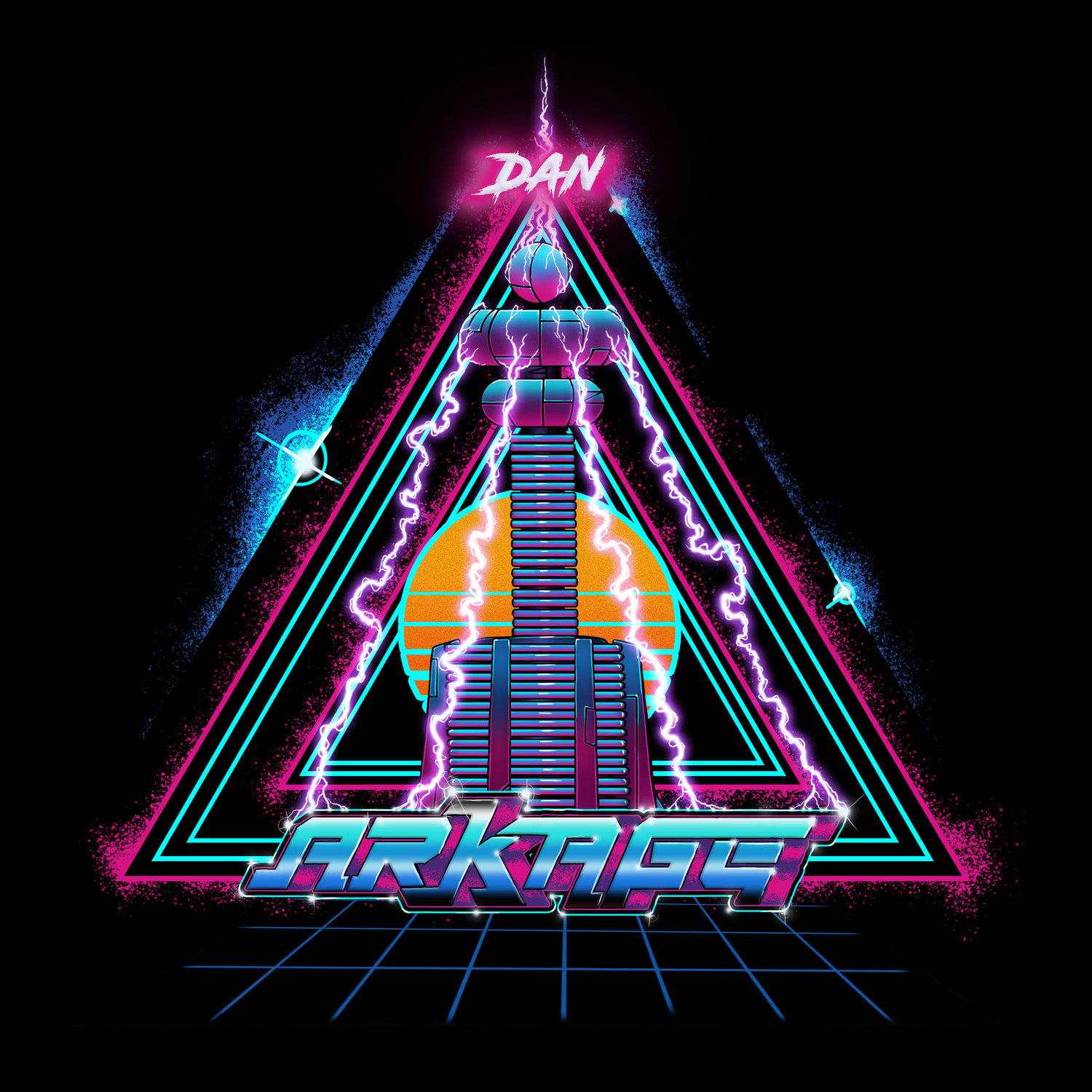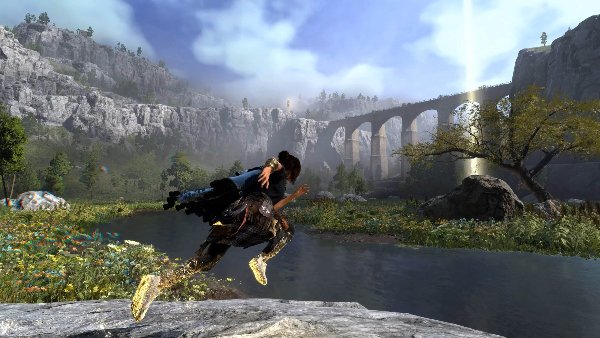New IP’s are tough to pull off these days. People say they want the new stuff, some new world to explore and story to be immersed in but unless the gameplay is absolutely perfect from the off and the hype train is storming along then people simply won’t buy that new IP, causing developers and publishers to fall back on tried and tested franchises.
Enter Forspoken, Luminous Productions and Square Enix’s latest action RPG. It fell into this exact trap, but it is my belief that the game hasn’t been given it’s due credit as, while I admit it's not all perfect, once you get a few hours into the game and get the flow of things you will be treated to a cool world to explore with some interesting story/lore concepts and a battle system that provides some of the best attack animations outside of a Final Fantasy game.
Forspoken begins in modern day New York, our protagonist, Alfre ‘Frey’ Holland is trying to look after herself and her cat while dodging local gang’s and the police. We find that Frey has a mysterious past having been orphaned as a baby and abandoned. After an encounter with said gang results in her home being burnt down, Frey goes on the run and eventually finds a magical amulet called Cuff and is thrown into a portal to appear in a world called Athia.
It turns out that Cuff is sentient and talks to Frey via a psychic connection they share. Cuff is also very useful, granting her magical powers, both for battle and for traversing the world of Athia. That open world is massive and contains a lot of stuff to discover. Regular readers will know my disdain for open world games with too many icons on the map and while Forspoken does fall into this trap, it marks those icons with the rewards you get for completing them, be that mana, new gear or one of the various other collectibles.
So I am a little torn on this subject, as on one hand Forspoken does fall into the checklist trap, but it never felt like a chore. A major reason for this is something that other open world games should implement, which is being able to add more than one way point to the map. You can have up to five going at any given time, as well as the one for your main story objective. It allows you to plan a path towards that objective while also picking up major upgrades along the way. It’s a genius idea that, at least for me, stopped the icons becoming a chore you have to do.
It promotes exploration and, since the items you need to increase your magical abilities and upgrade your gear are just strewn about the world, you can get plenty for upgrades without having to grind out battles over and over again. Those items include glowing orbs of Mana, which is an interesting way to handle that age old mechanic and I really like it as currency rather than a meter that drops down to power your abilities and most powerful attacks. To be clear, you still have a meter to govern that, but it's stamina. It’s a little twist on the same formula, but keeps things that little bit fresher.
As you travel around you discover that there is only one city left on Athia, Cipal, and everything else has been destroyed by ‘The Break’ as Frey dubs it. This is a miasma that corrupts creatures caught in it, causing them to become grotesque and powerful monsters with exposed bones and, for some reason, gold covering sections of their bodies. This fate awaits creatures ranging from bears to deer to crocodiles, and of course, the humans unfortunate enough to escape.
The humans are just zombie mobs that prove, especially with the later powers, trivial to defeat, but some of the bigger creatures are no joke and can come at you with large groups. Each creature also has a weakness to a specific type of magic that Frey can use based on four elements: Earth, Fire, Water and Lightning. Switching between each magic type is easy and paying attention to what weakness a given enemy has is crucial to success. This can easily be found by performing a ‘Cuff Scan’ which reveals more information about the creature in question, as well as revealing collectibles and resources.
The cuff scan becomes vital as some of the upgrade resources are really hard to see, because they don’t glow or anything like that. As you get close you do get a little, and I mean a little, icon on them to say where they are, but when using her magical parkour abilities Frey travels so fast that it can be difficult to spot them. This is especially as a lot of them are flowers that just blend into grassy areas. It adds to the overall look, but can be maddening when trying to farm for upgrades.
The aforementioned magical parkour is a true gem of the game. While it can be a little hard to control in spots and you can easily overshoot things you are aiming for, the sense of speed is immense and charging across the landscape, flipping and bouncing over obstacles is an absolute blast. It again means that finding all those icons isn’t as much of a chore as it would be in other games and is a stand out mechanic.
I mentioned previously that Frey has access to four types of magic. While one of those, and the first one you get, is all Frey’s, the others are acquired by defeating the god like Tanta’s, beings of power that used to benevolently rule Athia, but now are part of its downfall. This concept is super cool and one of my favorite story aspects of the game, though the remaining tale falls pretty epically into “I can see where this is going a mile away” territory not long after you reach the magical land. It’s a shame that overall the story is pretty generic as there are some really cool concepts and lore dotted over the world, but I guess we can’t have it all and frankly, the game play’s so well you can easily ignore the story, though it does take quite a turn at one point that makes it worth it.
Some of the magic attacks available to Frey are some of the coolest animations of any game in recent years. For example, one water based attack engulfs an enemy in a ball of swirling water and when you attack it, the ball explodes and damages everything around it. It looks awesome, and gives fights a spectacle only matched by using the summons in Final Fantasy. The basic magical attacks are just that, but with three levels and multiple options allow you to play around in combat. The biggest attacks are secondary magic, but even bigger than that is the surge magic, screen filling powers that at their fullest power destroy everything in their path in one hit, though I admit that does depend on exactly what you are fighting at the time.
Charging up a barrier of molten rock to raise from the ground to hit anything Frey is facing is deeply satisfying and while not all of the abilities are particularly useful, and trust me, there are so many that there are more of those than you would really want, battles are fast and exciting. Fluidly dodging attacks while switching to attack magic before unleashing a powerful secondary attack before finishing a group of enemies off with a surge attack just feels great, and rarely gets old.
Ultimately the biggest problem with Forspoken is the writing. As I said previously the story is as predictable as they come, which is disappointing but not the real problem. The worst sin is that when Frey is talking, while a fine performance from the actor, the dialog is just dire. I don’t mind swearing in games, or any medium save for content made for kids, but the way Frey talks borders on the unbelievable. I have seen things floating about the internet saying that if this is how the developers think New Yorkers talk they are very much mistaken.
It can get grating when you play a game for forty odd hours, and this is compounded by the fact that certain actions have exactly one set of dialog. I get that the more sound you record with an actor makes the costs of a game go up, but hearing the exact same thing every time you interact with a certain object, and there being multiple objects of the same type around the world, gets very annoying very quickly. I almost would have preferred it to say the thing once, then never have a voice line again after that first one. To be fair, that does happen to some stuff, just not everything.
Honestly though, go into Forspoken for the gameplay and you will be greatly rewarded with a fast paced beautiful game with satisfying combat and enough abilities to really play around in fights. You will probably take or leave the story, but don’t give in to the rumors, it’s actually a pretty great game, you just have to give it a chance.















